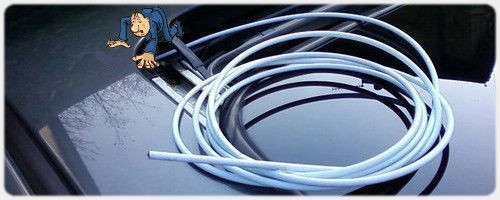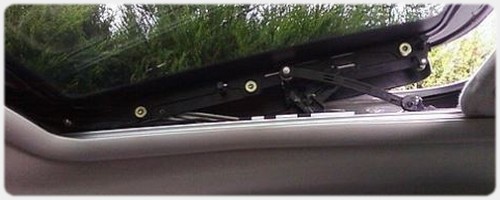
Clearing Drainage Tube
A length of plastic coated curtain wire broke it down while pushing through. The wire wont go the full length in the lower section, pulling back the wheel arch liner for easier access, was required..
With various aspects of servicing, maintenance, including driver assisted features and vehicle monitoring. For our 1996 Rover 200 and the 04 ZR 120+
About features, and driver notifications on our MG-Rover Information Pages

A length of plastic coated curtain wire broke it down while pushing through. The wire wont go the full length in the lower section, pulling back the wheel arch liner for easier access, was required..
At this stage we decided to replace the ageing sunroof seal. With plastic side trims removed (shown) the six securing bolts were all removed using a T25 star bit, with the panel in its (closed position) then pushed out from inside the vehicle while a second person retrieves it, better safe than sorry, glass panel now on a blanket covered flat area, old seal was removed, and glass edge now cleaned, sealant is applied to the new seal, and bonded. to the glass panel. With the joining being at the (rear) then left to cure for several hours.

Sunroof panel tilted, showing one side of the 6 bolts, after removing the two plastic side panel covers, access to removing these can be done with sunroof in its closed position, and a safer option.
Good preparation and using quality silicone sealant should make this fitting a one off for the life of the vehicle, A new type of seal available has a 'soft close' velvet edge, compared to an older all rubber seal, that can grab at the roof opening, lifting it away from the glass panel after years of use, some older cars may still have the original factory ones fitted.
Several years later and more Issues with the vehicles roof headlining, this problem of sagging affected the area above the rear side passenger door, could be age related, most probably the bonding of the adhesive had dried out over a very long period of time.
A simple solution of using an hair dryer to heat up the adhesive bonding, while constantly smoothing out the affected area, appeared alright, but only for a short period of time, as we probably expected. We now needed to look at any other low cost ways to solve this issue.
.Our next option, adding an extension tube to a bonding spray can with a 360 degree spray pattern, then to be inserted into a fine razor cut, at the lowest part where the lining sags the worst.
The above solution worked very well indeed, and did not require the time consuming hassle of having to remove all of the associated interior trim just to gain access to actually having to remove the whole headlining roof panel from the vehicle.
Information is referenced only to our 1996 Rover 200 and 2004 ZR 120+